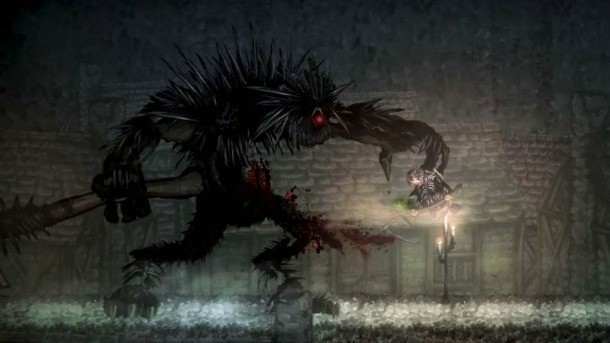Our extra-large special edition is here. Subscribe today and receive the 25% longer issue at no extra cost!
Salt and Sanctuary Review

Salt and Sanctuary wears its inspirations on its sleeve. Borrowing the progression, class system, and checkpoint method of Dark Souls, and the 2D combat, platforming, and level design approach of Castlevania, Ska Studios’ most ambitious game to date sits in the mind space precisely between the two. The pillars of its gameplay may not be original, but the immaculate balancing, massive game world, gratifying combat, and local cooperative play all ensure Salt and Sanctuary deserves consideration in the same breath as the games to which it pays homage.
Character creation communicates the first hints of the depth on offer. Multiple classes each provide distinct play styles, including agile ranged combatants, devastating mages, whip-wielding hunters, and armored knights. Having played with several builds, I’m impressed how each offers a novel experience, and is still balanced to confront the many combat challenges that lie ahead, as well as the seemingly endless options for armor and weapons that each cater to different strategies. After creation, character development is freeform along a thoughtfully constructed grid of interconnecting abilities, allowing for dynamic build development. Unfortunately, with the exception of a rare item that allows for minor adjustments to your selected upgrade path, there’s no way to respec. As such, experimentation isn’t really encouraged; any given character is best served by specialization along one or two distinct upgrade paths.
Little in the way of linear storytelling is here, but the richly imagined setting picks up some of the slack. The mysterious island upon which you are shipwrecked is a bleak and foreboding place, populated with undead creatures and dungeon complexes displaced from place and time. The coveted substance of salt is the currency of character improvement, easily lost if you die in the world and fail to retrieve it from your killer. Hidden sanctuaries must be dedicated to your god of choice, thereafter becoming a haven for you and the villagers you summon to that location, including blacksmiths, merchants, alchemists, and even fast-travel guides to interconnect your web of discovered locations.
Expanding your network of save points and filling it with vendors provides a sense of improvement above and beyond personal character development, although just like in the FromSoftware games that popularized the concept, you’ll be furious more than once when you die far from a checkpoint, or you can’t find one in the maze of corridors. That’s especially true because of the absence of any in-game map or navigation aids; chalk it up to hardcore difficulty if you like, but being lost rarely adds up to fun.
The early hours are the most frustrating as you learn the rhythm of movement, dodging, blocking, and various attack options. The most skilled players may be able to move without delay into the mid-game, but many players will share my experience, and be forced to grind frequently in these early hours to be a match for the difficult early bosses. That’s a shame, because the natural flow of exploration, and the sheer size of the game, is more than enough to be entertaining without the need to fruitlessly run in circles in the name of level advancement.
The many secret areas, dozens of enemy types, and variety of equipment options keep things engaging even when forward momentum stalls. Familiarity with the game’s systems help smooth out progression after those introductory hours, and I fell into a pleasant tempo of area exploration and using new upgrades to progress past previously inaccessible paths. The placement and pacing in these later sections is ideal, including optional zones, intriguing new powers, and even a path to an alternate ending. The visual and functional variety of the many bosses is a particular high point as the game builds towards its climax.
If you get lonely, almost the entirety of Salt and Sanctuary can be played together with a local co-op partner. You can even pop a special item to duel it out with your buddy. The co-op functionality eases a great deal of the potent challenge that defines the game, making it a great way for a broader segment of players to enjoy the game. Nailing an appropriate class combo with your friend to best conquer your foes is a lot of fun. When the co-op options are considered alongside both a new-game-plus feature and the exhaustive character build variety, the replay potential skyrockets.
Ska Studios continually impresses with the ambition of its games, which are always defined by an impeccable attention to detail and tight moment-to-moment mechanics. That reputation for clean design continues unabated with Salt and Sanctuary. This nightmarish island is well worth a visit, even if you’ve never confronted the challenging games that engendered the adventure.







Get the Game Informer Print Edition!
Explore your favorite games in premium print format, delivered to your door.
- 10 issues per year
- Only $4.80 per issue
- Full digital magazine archive access
- Since 1991










